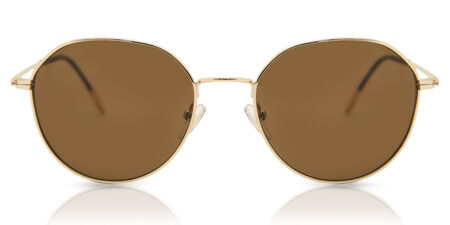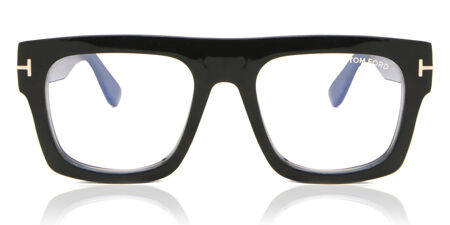

What Is Ocular Hypertension?
The term ‘hypertension’ refers to high blood pressure and ocular hypertension is a condition where the intraocular pressure in your eyes exceeds a healthy eye pressure range.
The eye pressure is measured in millimeters of mercury and a value above 21 usually indicates hypertension of the eyes.
Sustained over an extended period of time, this can damage the optic nerve causing glaucoma, an incurable eye disease which can lead to blindness in the worst of cases.
What is ocular hypertension?
Ocular hypertension is the result of an imbalance in aqueous humour.
Aqueous humour is a clear fluid that flows through the pupil and the chamber of the eye.
If the ciliary body produces too much aqueous, the pressure in the eye increases, causing ocular hypertension.
Your ocular pressure may also be beyond the normal and healthy scope where too little of the fluid is drained away. The progress of the condition from ocular hypertension to glaucoma is slow.
People with ocular hypertension can still have healthy optic nerves (when testing peripheral vision). In short the condition is not immediately evident.
Causes of ocular hypertension
There are a number of factors which can cause the condition including: smoking, diabetes, heart disease, excessive consumption of salt, red meat, alcohol, sugar and other eye conditions.
Some medications can also cause ocular hypertension in some individuals e.g. steroid medicines used to treat asthma.
If you’ve had an injury to the eye, a side effect can be disruption to the balance of aqueous production/drainage.
Other factors such as race and genetics also predispose some individuals to the condition.
Age is another factor as intraocular pressure increases slowly with age.
Adults over the age of forty are at greater risk than their younger counterparts.
Those of African descent as well as those with a family history of ocular hypertension or glaucoma are also more likely to develop the condition.
Gender wise, men have a higher risk of developing glaucoma whereas women are more likely to develop ocular hypertension.
Symptoms of ocular hypertension
Common symptoms of ocular hypertension include blurred vision and without treatment, bleeding in the eye but this is often in the latter stages.
It is important to have regular eye exams as this is the easiest and safest way to detect how healthy your eyes are and if there are any disruptions to the aqueous humour.
Glaucoma is a condition which cannot be reversed once developed so prevention really is the best cure.
How to reduce high eye pressure
There is no guaranteed way to prevent hypertension, but a good strategy would be to have a healthy and balanced diet, regular exercise and an annual eye exam at the minimum.
This is even more pertinent if you have a history of glaucoma in your family.
What Is Ocular Hypertension?
The term ‘hypertension’ refers to high blood pressure and ocular hypertension is a condition where the intraocular pressure in your eyes exceeds a healthy eye pressure range.
The eye pressure is measured in millimeters of mercury and a value above 21 usually indicates hypertension of the eyes.
Sustained over an extended period of time, this can damage the optic nerve causing glaucoma, an incurable eye disease which can lead to blindness in the worst of cases.
What is ocular hypertension?
Ocular hypertension is the result of an imbalance in aqueous humour.
Aqueous humour is a clear fluid that flows through the pupil and the chamber of the eye.
If the ciliary body produces too much aqueous, the pressure in the eye increases, causing ocular hypertension.
Your ocular pressure may also be beyond the normal and healthy scope where too little of the fluid is drained away. The progress of the condition from ocular hypertension to glaucoma is slow.
People with ocular hypertension can still have healthy optic nerves (when testing peripheral vision). In short the condition is not immediately evident.
Causes of ocular hypertension
There are a number of factors which can cause the condition including: smoking, diabetes, heart disease, excessive consumption of salt, red meat, alcohol, sugar and other eye conditions.
Some medications can also cause ocular hypertension in some individuals e.g. steroid medicines used to treat asthma.
If you’ve had an injury to the eye, a side effect can be disruption to the balance of aqueous production/drainage.
Other factors such as race and genetics also predispose some individuals to the condition.
Age is another factor as intraocular pressure increases slowly with age.
Adults over the age of forty are at greater risk than their younger counterparts.
Those of African descent as well as those with a family history of ocular hypertension or glaucoma are also more likely to develop the condition.
Gender wise, men have a higher risk of developing glaucoma whereas women are more likely to develop ocular hypertension.
Symptoms of ocular hypertension
Common symptoms of ocular hypertension include blurred vision and without treatment, bleeding in the eye but this is often in the latter stages.
It is important to have regular eye exams as this is the easiest and safest way to detect how healthy your eyes are and if there are any disruptions to the aqueous humour.
Glaucoma is a condition which cannot be reversed once developed so prevention really is the best cure.
How to reduce high eye pressure
There is no guaranteed way to prevent hypertension, but a good strategy would be to have a healthy and balanced diet, regular exercise and an annual eye exam at the minimum.
This is even more pertinent if you have a history of glaucoma in your family.















































